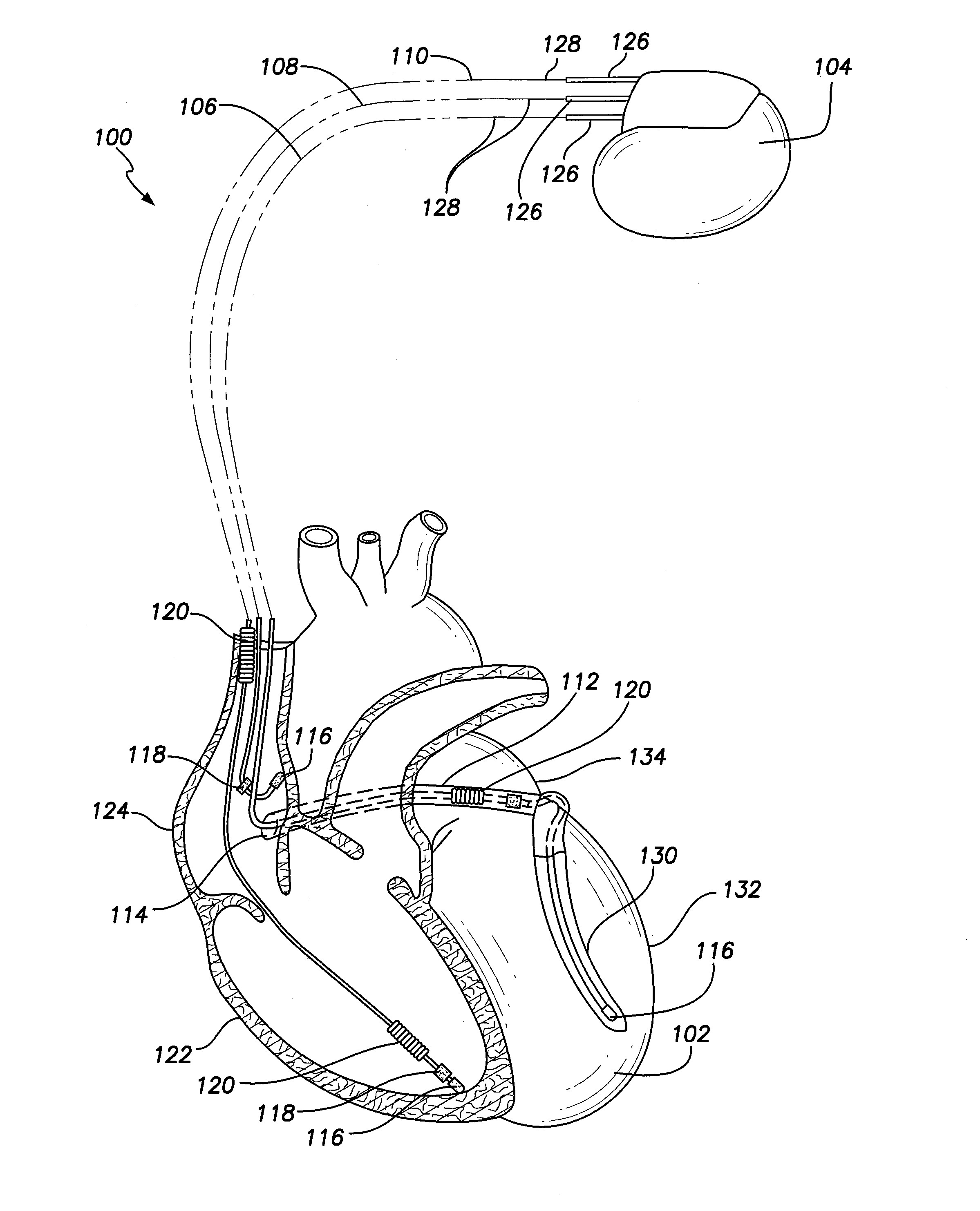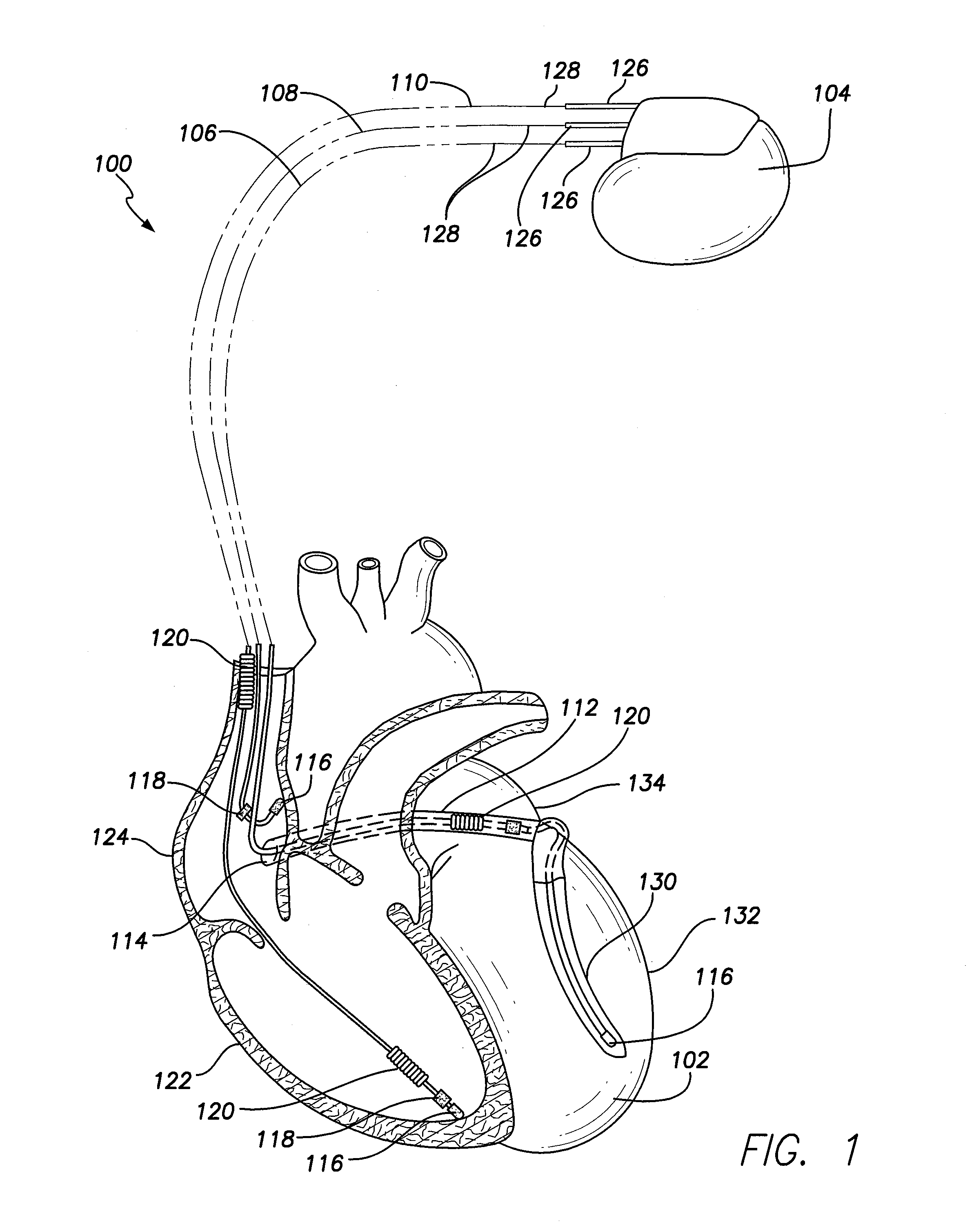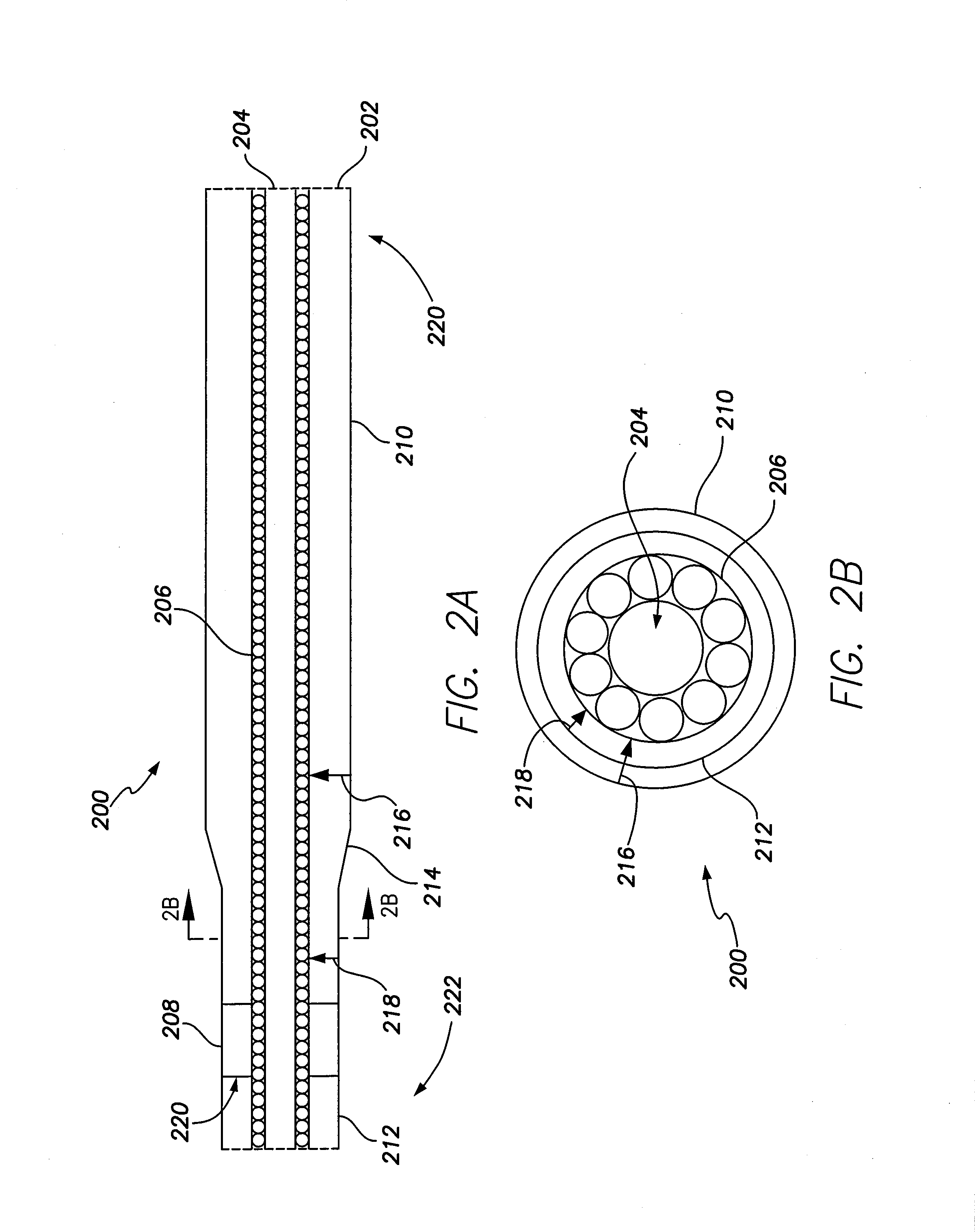Implantable lead with body profile optimized for implant environment
a technology of implantable leads and body profiles, applied in the field of implantable medical leads, can solve the problems of failure to deliver, type prone to reliability issues and/or inferior biostability, insulation abrasion and crush failures are common reliability issues,
- Summary
- Abstract
- Description
- Claims
- Application Information
AI Technical Summary
Benefits of technology
Problems solved by technology
Method used
Image
Examples
Embodiment Construction
[0022]Aspects of the presently disclosed technology involve implantable medical leads with a body profile having a plurality sections each optimized for an environment in which the section is to be implanted and methods of manufacturing such implantable medical leads. In one aspect, the implantable medical lead includes an insulation layer having one or more seamless transitions in performance characteristics (e.g., thickness, material type, etc.) along a length of the insulation layer between a proximal end and a distal end. The transitions create a plurality of sections, each section optimized for the environment in which the section will be implanted without compromising the performance of an adjacent section. For example, the insulation layer may have a transition between a thin-walled insulation section at the distal end, where lead-body flexibility is desirable, and a thick-walled insulation section at the proximal end, where abrasion, crush, and wrinkle / crack resistance is ne...
PUM
| Property | Measurement | Unit |
|---|---|---|
| diameter | aaaaa | aaaaa |
| diameter | aaaaa | aaaaa |
| diameter | aaaaa | aaaaa |
Abstract
Description
Claims
Application Information
 Login to View More
Login to View More - R&D
- Intellectual Property
- Life Sciences
- Materials
- Tech Scout
- Unparalleled Data Quality
- Higher Quality Content
- 60% Fewer Hallucinations
Browse by: Latest US Patents, China's latest patents, Technical Efficacy Thesaurus, Application Domain, Technology Topic, Popular Technical Reports.
© 2025 PatSnap. All rights reserved.Legal|Privacy policy|Modern Slavery Act Transparency Statement|Sitemap|About US| Contact US: help@patsnap.com



